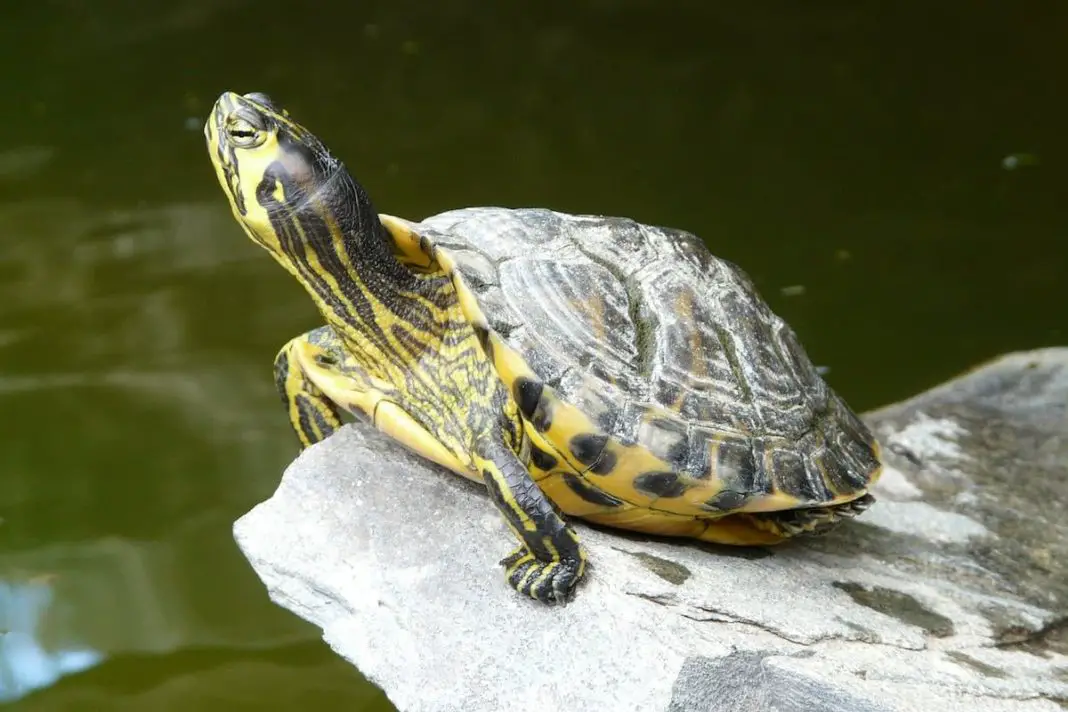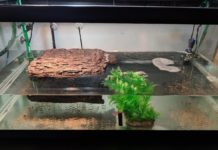Why Is Your Turtle’s Water Green?
Green water is caused by algae blooms which is commonly caused by a spike of nitrate in the water.
Should you worry about your tank water being green? The good news is that it’s all part of the natural cycle, so it’s completely normal. It’s important to know that algae need 3 things to thrive which are food, light, and temperature, so it can be very hard to keep your tank free from the unpleasant green look!
Preventing Your Turtle’s Water From Becoming Green
One of the most important things you have to do to keep your turtle healthy and happy is to keep its water clean and fresh. It’s also one of the things that will make you proud of your turtle habitat: When people say, “Wow, I can’t believe how clear their water is!”
Preventing your tank’s water from becoming green isn’t as easy as most people think, as turtles are considered quite messy.
The most important thing to remember about the water in your turtle’s enclosure is that turtles eat, drink, swim, defecate, and urinate in the same water. So, their tank’s water can get dirty very quickly. If you don’t keep up with it, your turtle’s water can very quickly become green, dirty, and smelly.
Keeping Your Turtles Water As Clean As Possible
Maintaining the tank’s water quality only takes a few hours every week if it’s done properly. Here are the most important things you should do to help maintain a healthy water environment for your turtle.
Make Sure Their Tank Is Large Enough
If your turtle’s tank is too small, it will be much harder to keep clean. As turtles defecate a lot, if their tank is too small, it will quickly become dirty. Aquatic turtles love to swim, and if their tank is too small, it won’t give them enough swimming room to get enough exercise to stay healthy.
Turtles also generate a lot of ammonia, which is toxic to them. The filter of a turtle’s tank is what filters the ammonia out of the water using biological filtration, meaning that bacteria that’s considered “friendly” colonizes the filter and digests the ammonia. However, if there’s not enough water, the concentration of ammonia can quickly become very high.
The Rule Of Shell
One way to determine how big a tank your turtle needs is that for every inch of upper shell in length, your tank should hold a minimum of roughly 10 gallons of water. So, if your turtle’s upper shell is two inches long, their enclosure should hold at least twenty gallons of water. If it’s four inches long, their enclosure should hold at least forty gallons of water.
If there’s more than one turtle, you should size your tank for the first turtle, and then add half again as much for every other turtle. So, if you have two 5-inch turtles, your tank should hold a minimum of 75 gallons of water.
Although, not every owner may have enough space for a tank that big. If your tank is a bit smaller than what’s recommended above, then your turtles should still be okay. However, the downside to this is that you’ll have to work harder to keep their tank clean. Smaller tanks are a lot harder to keep clean.
Clean Up Leftovers
If there’s any leftover food after your turtle has finished eating, as leftover food can quickly begin to decay, causing the water in your turtle tank to become contaminated. So, you should clean up any leftovers with a net when possible.
An alternative is to feed your turtle in a separate tank from the one they live in. Remember that your turtle needs to be in water to eat, as most turtles can’t produce saliva.
You could also use a large bucket when feeding very messy foods like live food to your turtle.
Monitoring The Tanks Chemical Levels Is Vital
Although turtles aren’t quite as sensitive to chemical changes compared to aquatic fish, you should still monitor the water’s pH, ammonia, and nitrite/nitrate levels. You can use aquarium water test strips, which can be easier to use compared to a water test kit. However, these test kits aren’t quite as accurate.
The water of a fully cycled turtle tank should have the following water chemistry numbers:
- PH levels between 6.0 and 8
- Chlorine level of 0
- Ammonia level of 0
- Nitrite level of 0.5 ppm (parts per million)
- Nitrate level of 40 ppm or less
If your tank’s chemical levels meet the above requirements, your turtle should be pretty happy with their tank’s water.
You can reduce the pH in your turtle tank’s water by adding some driftwood to the tank or using peat moss in the tank’s filter. You’ll need to put the peat moss inside of an aquarium media filter bag.
If you need to raise the pH using an aquarium pH increase additive, you can use ordinary baking soda, or put crushed coral in the filter medium. If the pH in the water you use to add water to the tank is always low, then you can even some mix crushed coral into the tank’s substrate. However, this should only be done if your tap water pH is always low. If this problem is only temporary, you’re better off using it in the filter. It’s a lot easier to change the filter media than to change the tank’s substrate.
Regularly Water Changes Are Important
If you vacuum the tank frequently using a siphon-type vacuum, then you may not have to change the water as often (if at all) because you’ll still be doing a partial water change every time you vacuum.
How often you should change the water depends on your tank’s setup, the size of the tank, the type of filter, and how many turtles you have. When the tank’s water starts getting green, cloudy and smelly; or the nitrate levels are too high, is a sign that you’ve waited too long to do a water change. Nitrates are the end product of the nitrification cycle, so they need to be removed by changing the water.
Most turtle owners do partial water changes at least every 2 weeks, as long as the filter is good and has no water chemistry problems. If your tank or filter is a bit too small, or if your water chemistry numbers are not good, you’ll probably need to do water changes more often.









